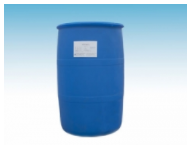Alkyl glycosides in skin cleansing products, because of APG has good safety, mild, decontamination, foaming and foam stability, compatibility and rheological behavior. Therefore, it is often used in bath liquid and facial cleanser for skin cleaning. Add a small amount of APG to the bath formula as a conditioner, which will make the skin feel more comfortable after washing.
In the hair conditioner, APG has a soft effect on the skin, no stimulation on the eyes, and good conditioning and maintenance effect on the hair. In coordination with quaternary ammonium salt, it is beneficial to improve the wet combing rationality of the hair, while the dry combing is basically unchanged. If some oil, such as octyl dodecanol, is added to conditioner, wet combing rationality will be further improved.
The use of APG as emulsifier in cosmetics can reduce the irritation of the formula, increase the moisturizing effect of the formula, and improve the efficacy of functional products.

The preparation method of alkyl glycoside comprises the steps of glycoside reaction, alcohol removal, decolorization and bleaching with glucose and C8? C20 fatty alcohol as raw materials and under the action of binary catalyst; the method specifically comprises the following steps:
(1) glycoside reaction: feed C8? C20 fatty alcohol to glucose in a molar ratio of 4? 8:1, add the binary catalyst of p-toluenesulfonic acid / hypophosphite, the mass ratio of the binary catalyst to glucose is 0.005 ~ 0.015:1, the reaction pressure is 5? 6kpa, the reaction temperature is 100 ℃? 140 ℃, the reaction time is 2? 2.5h, then cool to 60 ℃? 70 ℃, adjust the pH value of the reaction system to 8? 10, and get yellow micro The mass ratio of p-toluenesulfonic acid and hypophosphite in the binary catalyst is 2? 4:1.
(2) dealcoholization: the mixture of glycosides and alcohols obtained in step 1 was heated to 100 ℃? 120 ℃, and the carrier was added. The molar ratio was the carrier: glucose = 0.4? 0.6:1, and the reaction was carried out under the pressure of 4? 5kpa until no residual alcohol was evaporated out, so as to obtain light yellow alkyl glycosides.
(3) decolorization and bleaching: dissolve the alkyl glycoside obtained in step 2 into an aqueous solution, add the decolorizing aid and hydrogen peroxide under 70? 80 ℃ atmospheric pressure, react for 30min? 70min; then add the reducing agent, stir to remove the remaining hydrogen peroxide, and obtain a colorless and transparent alkyl glycoside aqueous solution; the quality of the decolorizing aid and hydrogen peroxide is 0.6? 1% of the quality of the alkyl glycoside obtained in step 2; and the reduction The mass of the agent is 0.08? 0.1% of the mass of the alkyl glycoside obtained in step 2; the carrier is glycol or glycerol; the decolorizing agent is magnesium oxide or tetraacetylethylenediamine; and the reducing agent is NaBH4 or NaHSO3.